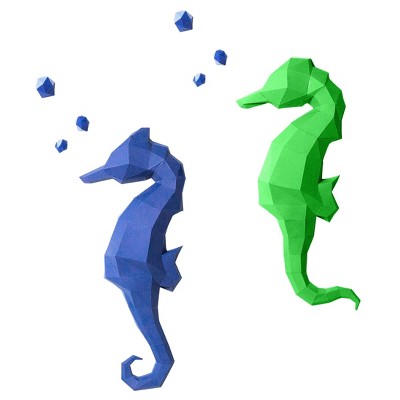Seahorses - by Catherine Wallis (Hardcover)

Similar Products
Products of same category from the store
AllProduct info
The seahorse is one of nature's most startling creations. For the ancient Greeks and Romans, who found them washed up on shore after storms, the only explanation for such an astonishing form was a mythological one: these creatures pulled the chariots of Neptune. The seahorse, even to us nowadays, seems out-of-this-world. It is a fish, but has the head of a horse and wears a crown. Its fins move so fast they are almost invisible. It has a tail, but a curly one like a monkey's, and instead of scales a suit of armour plating. Its eyes can swivel monstrously in two different directions at once. In most unfish-like and contrary manner, it swims upright, its progress slow and ponderous. Sometimes hardly bigger than a fingernail, the seahorse is full of surprises. It is a voracious eating machine, deadly to small shrimps, eating up to 300 in an hour. To protect eggs in open water and ensure the survival of the next generation, it is the male of the species that becomes pregant - a solution almost unique in the animal kingdom. A seahorse may live out its whole life within a square meter of seaweed, seagrass, or coral reef. To balance the fact that it can't swim very fast and escape predators, it has perfected the most artful camouflage. There are up to 100 species worldwide, ranging in size from approximately 1/2 or 3/4 to 12 (15 or 20mm to 300 mm), with the majority being about 6 (150mm) long. New discoveries are still being made, and the seahorse map is yet to be fully drawn. Catherine Wallis has been fascinated by seahorses all her life. A journalist who has worked for the weekly <i>Gulf Mirror</i> in Bahrain and <i>Middle East Economic Digest </i>as well as the <i>Hongkong Standard</i> and <i>Asiaweek</i>, she has never lived far from the ocean.
Price History
Price Archive shows prices from various stores, lets you see history and find the cheapest. There is no actual sale on the website. For all support, inquiry and suggestion messages communication@pricearchive.us




















